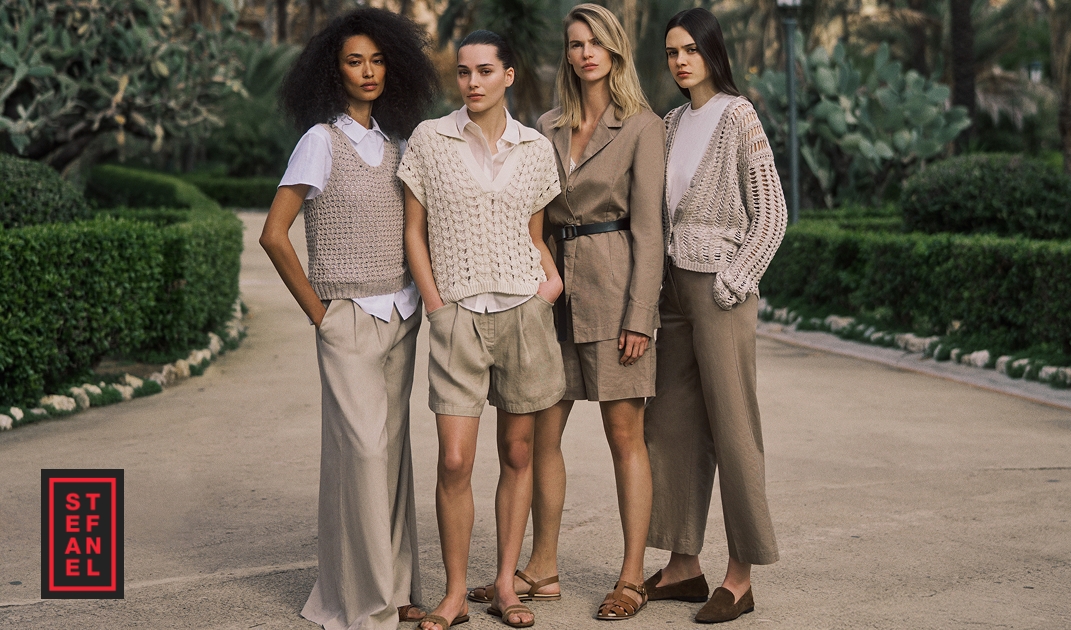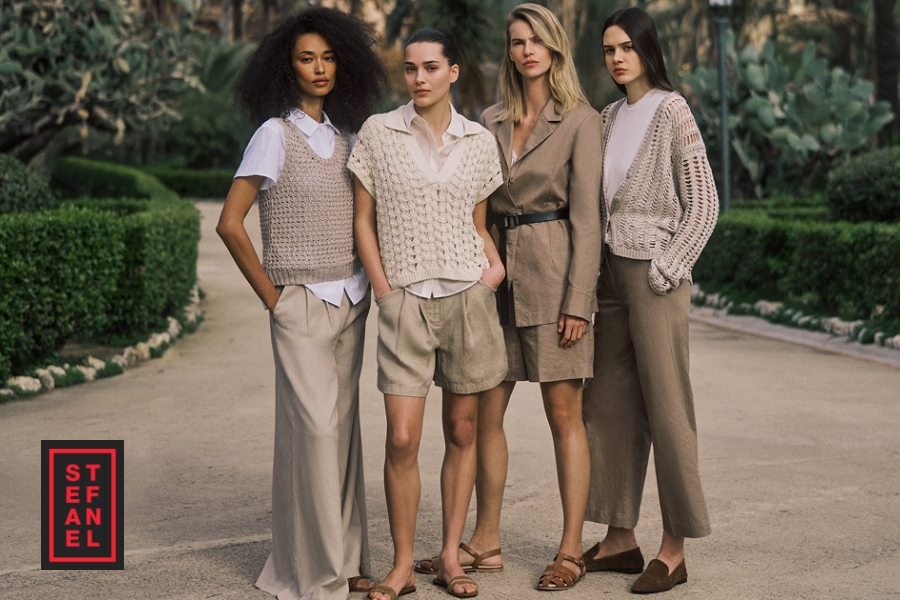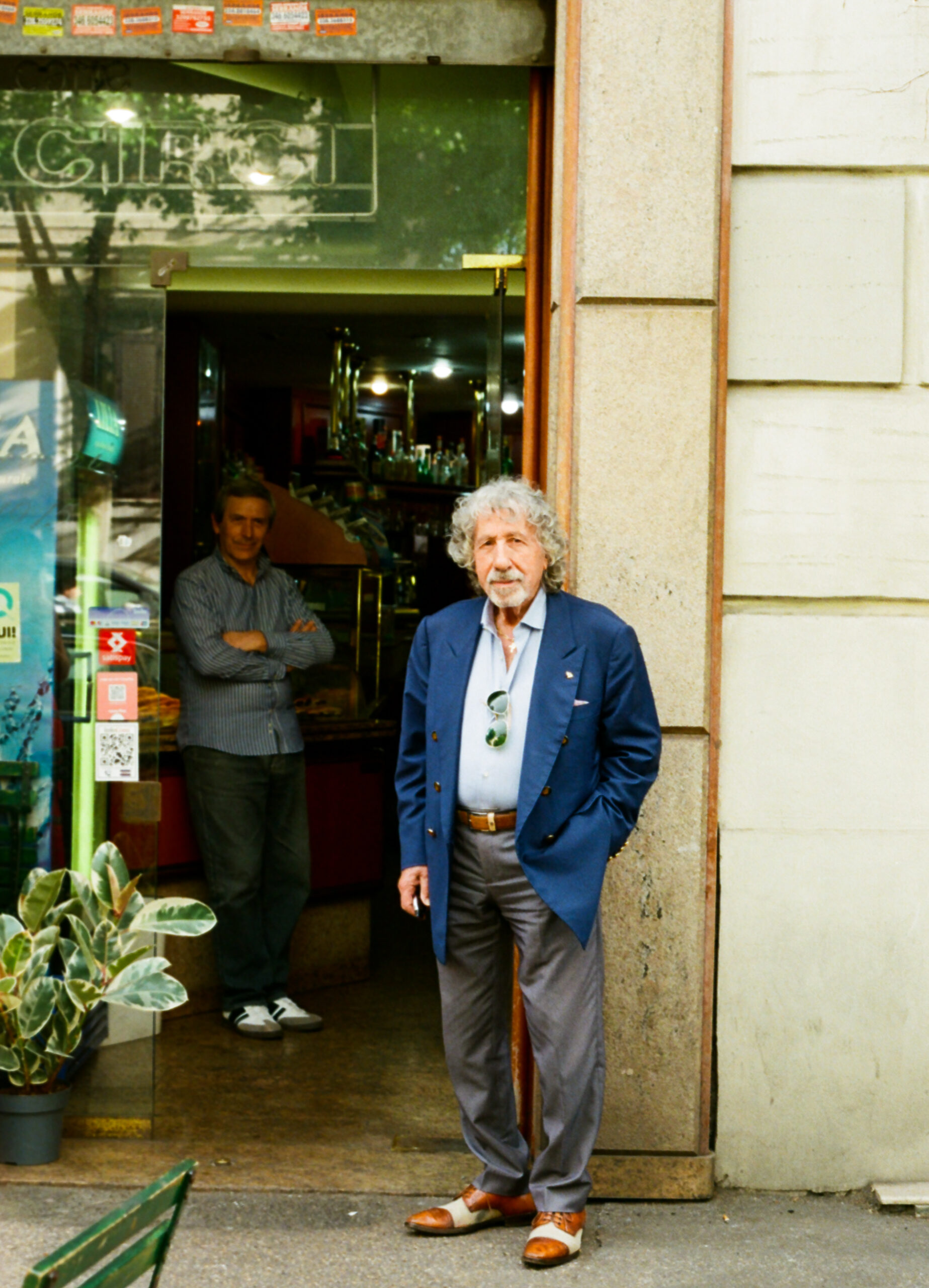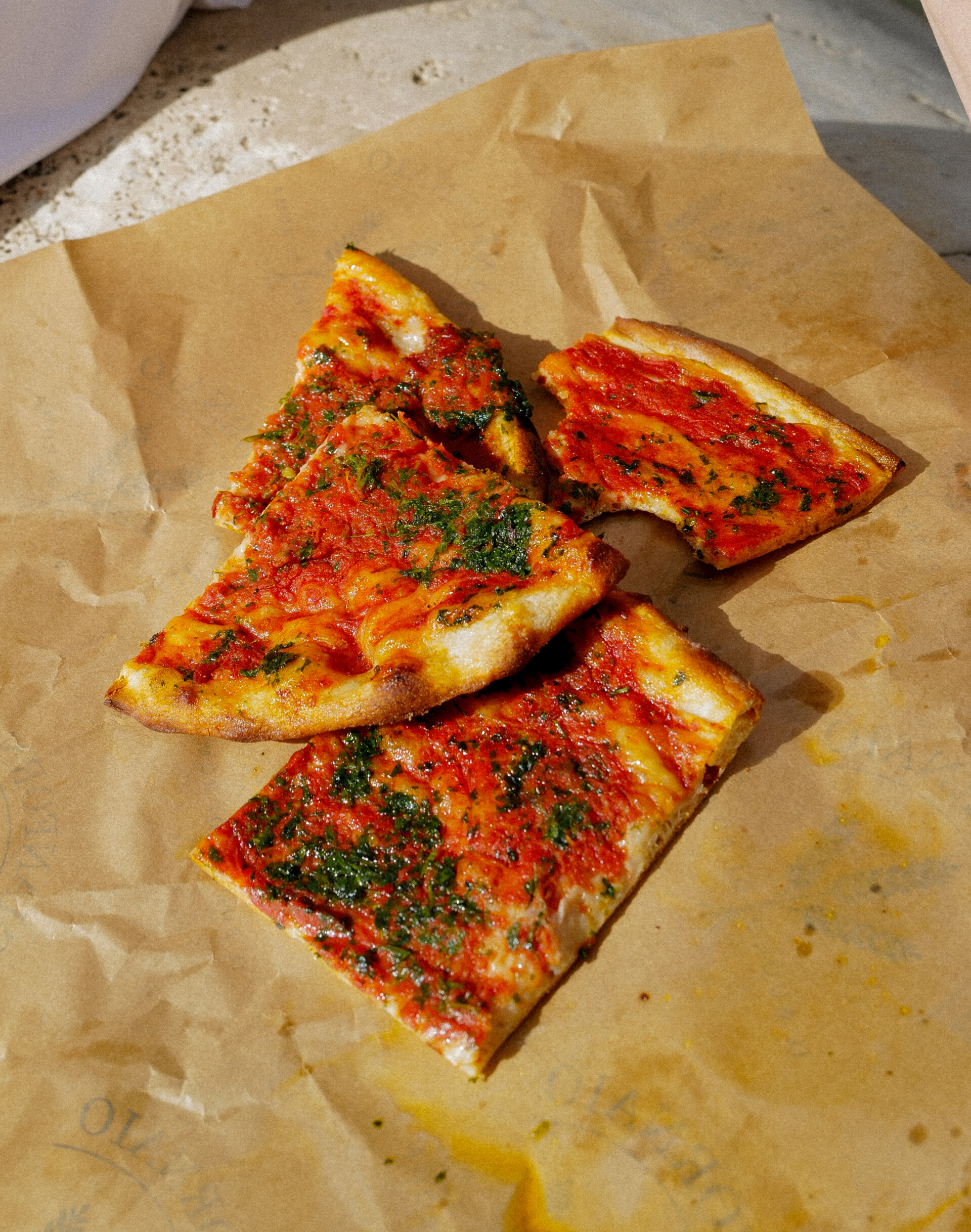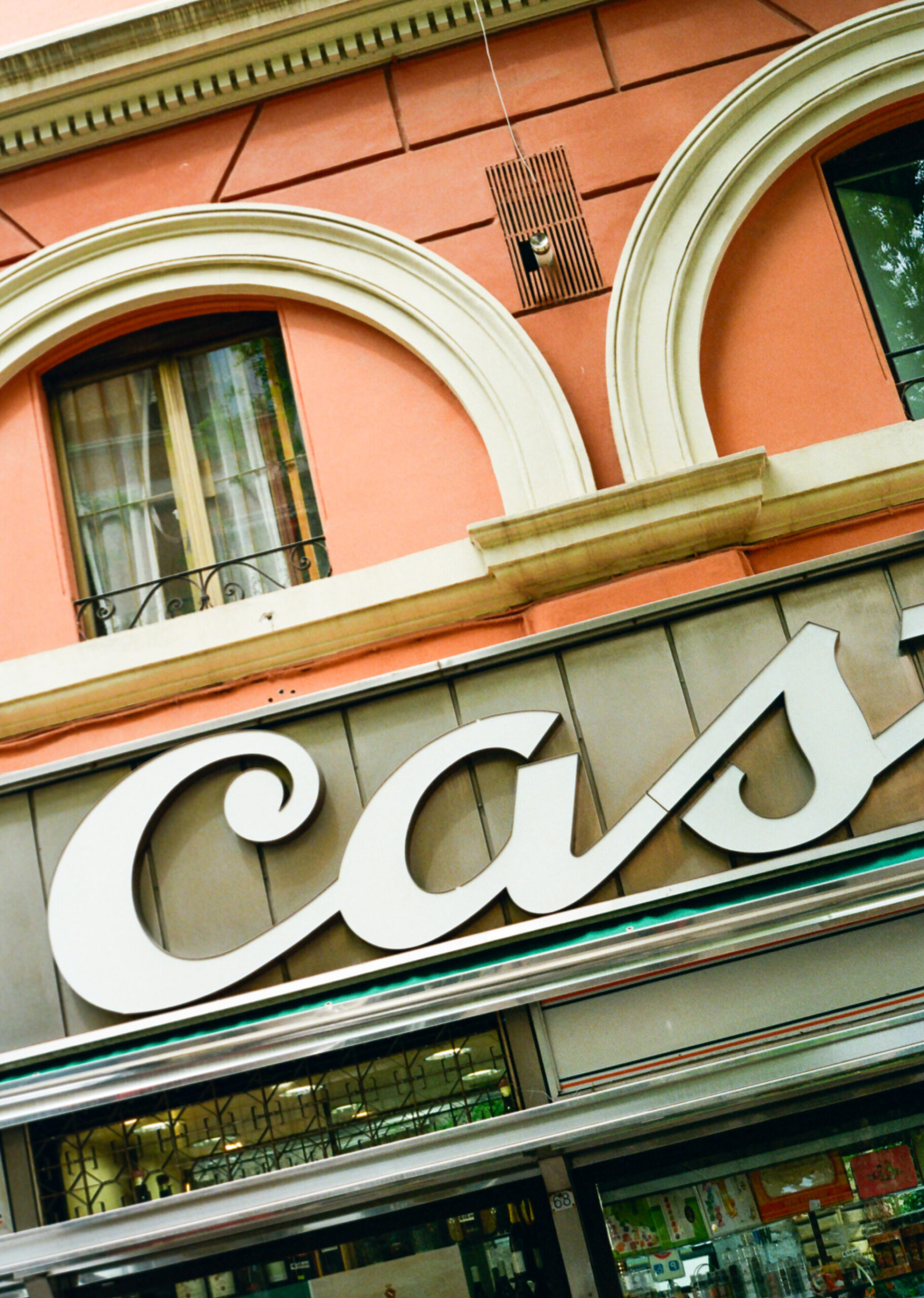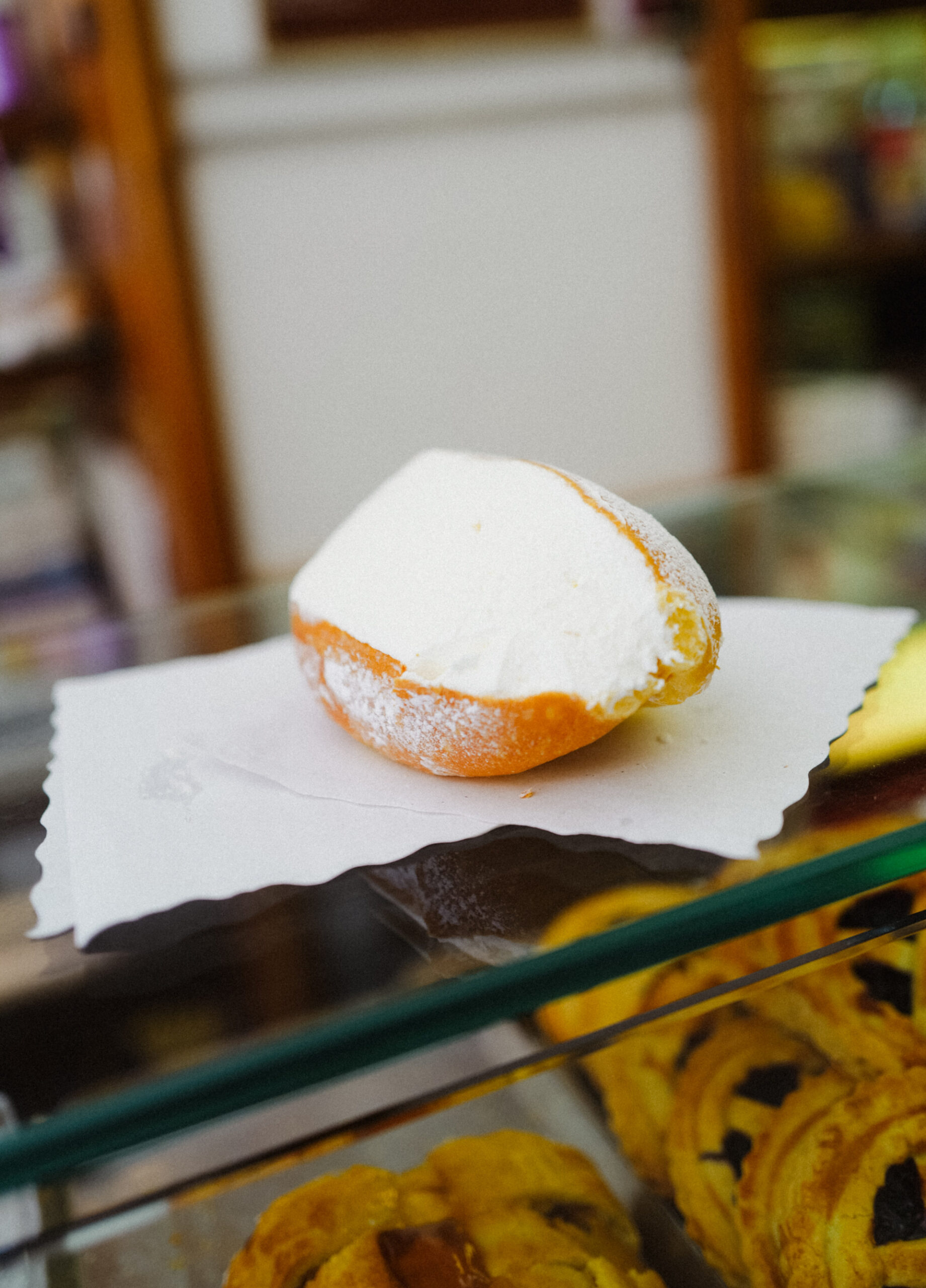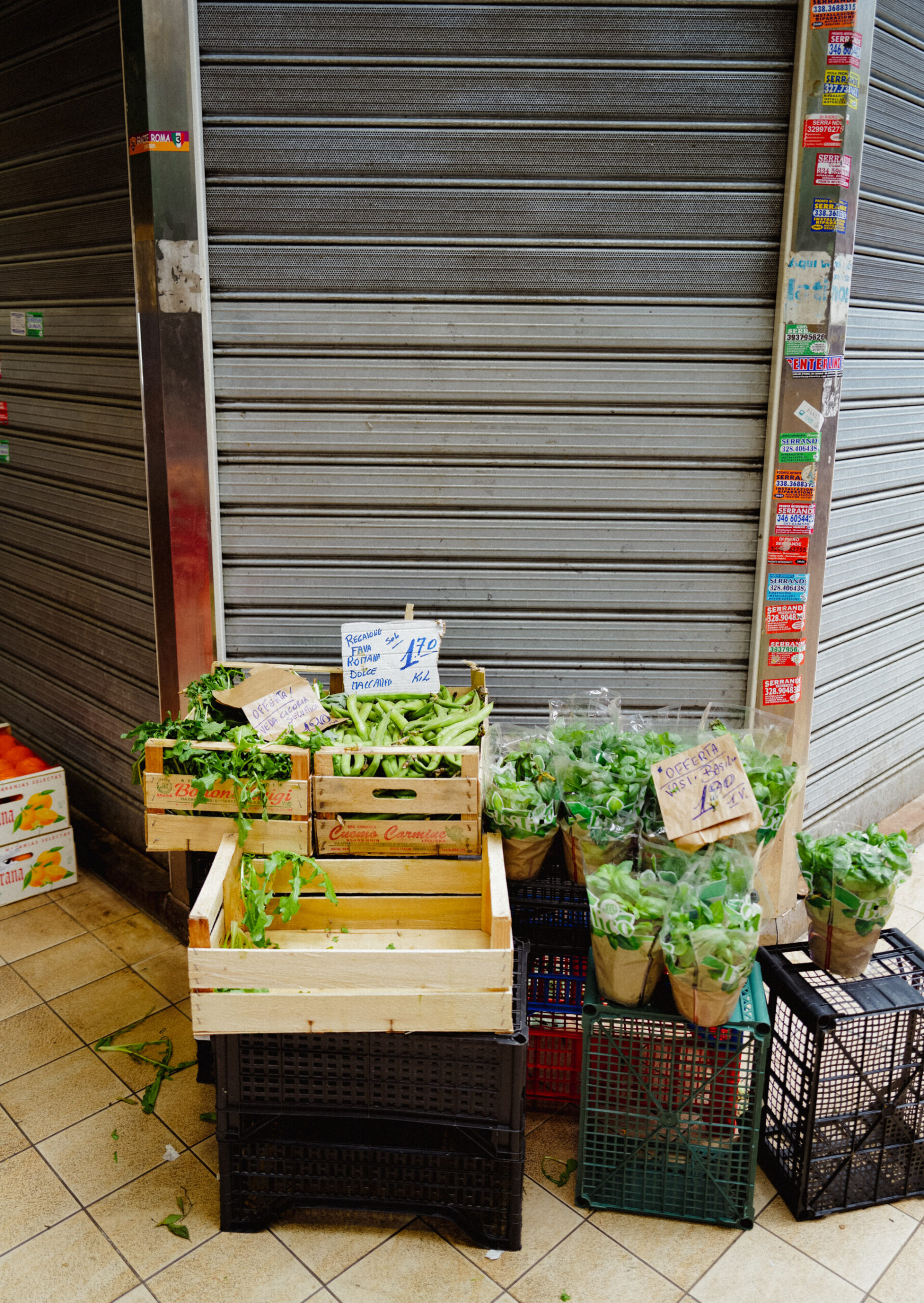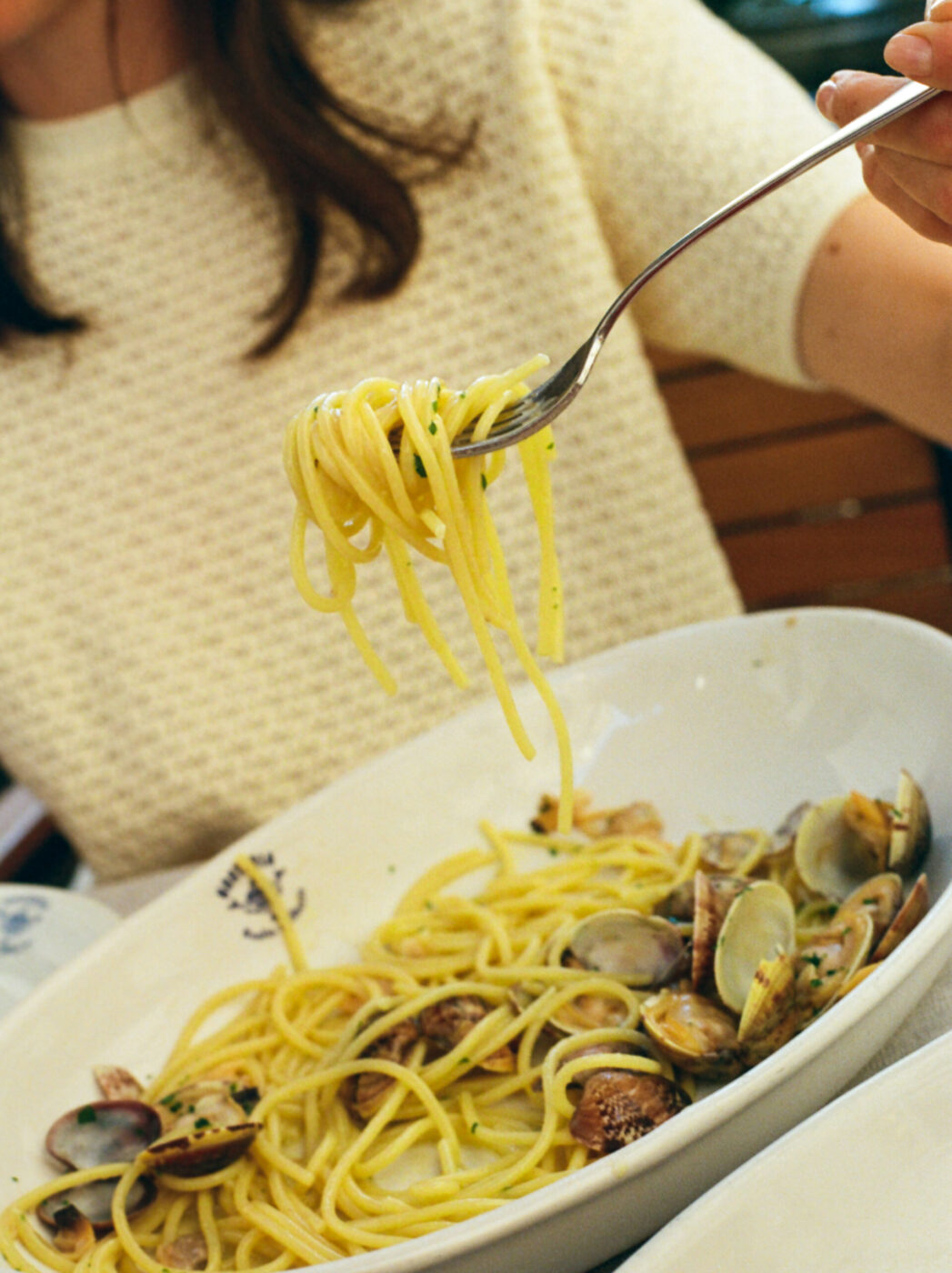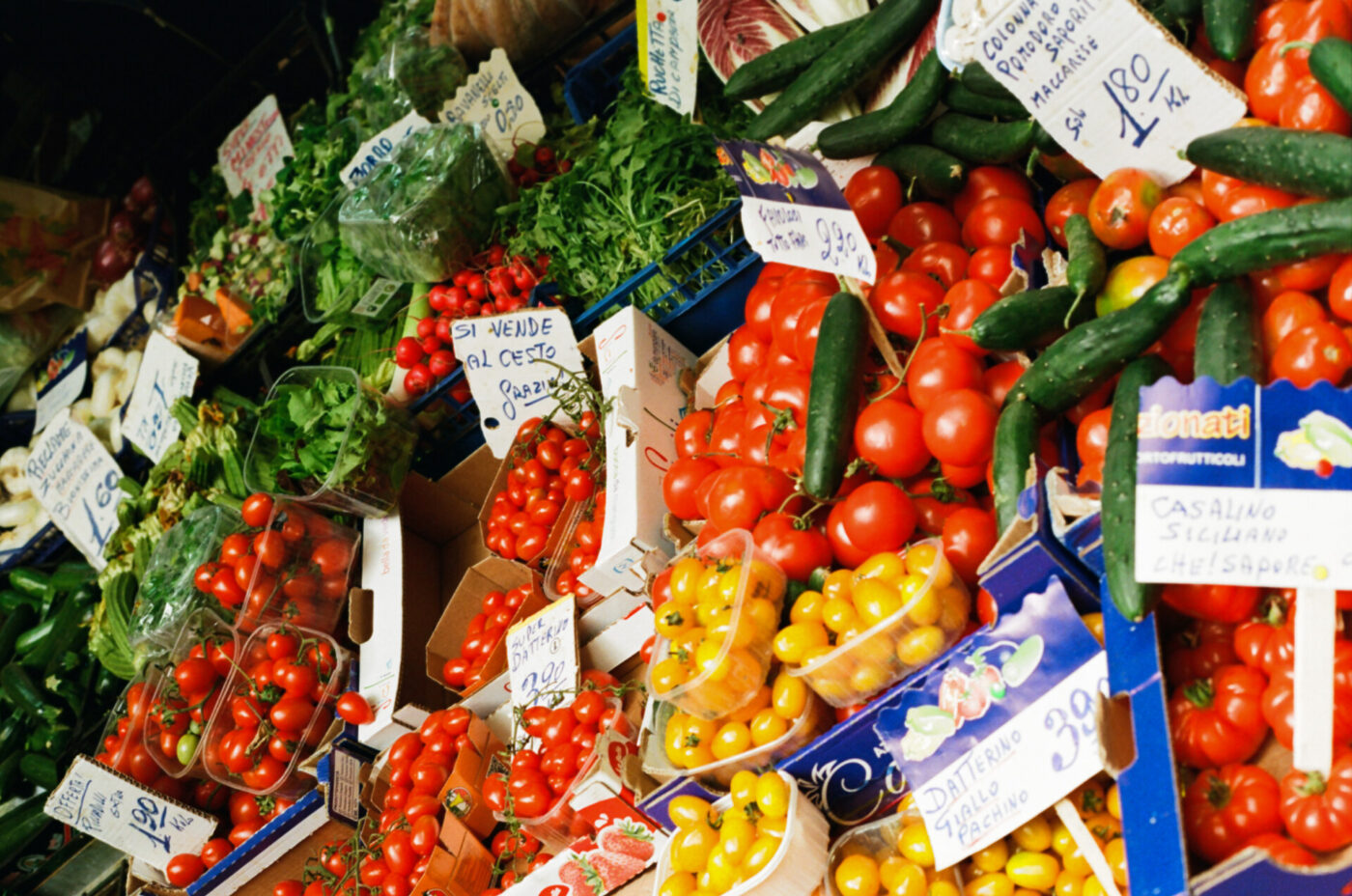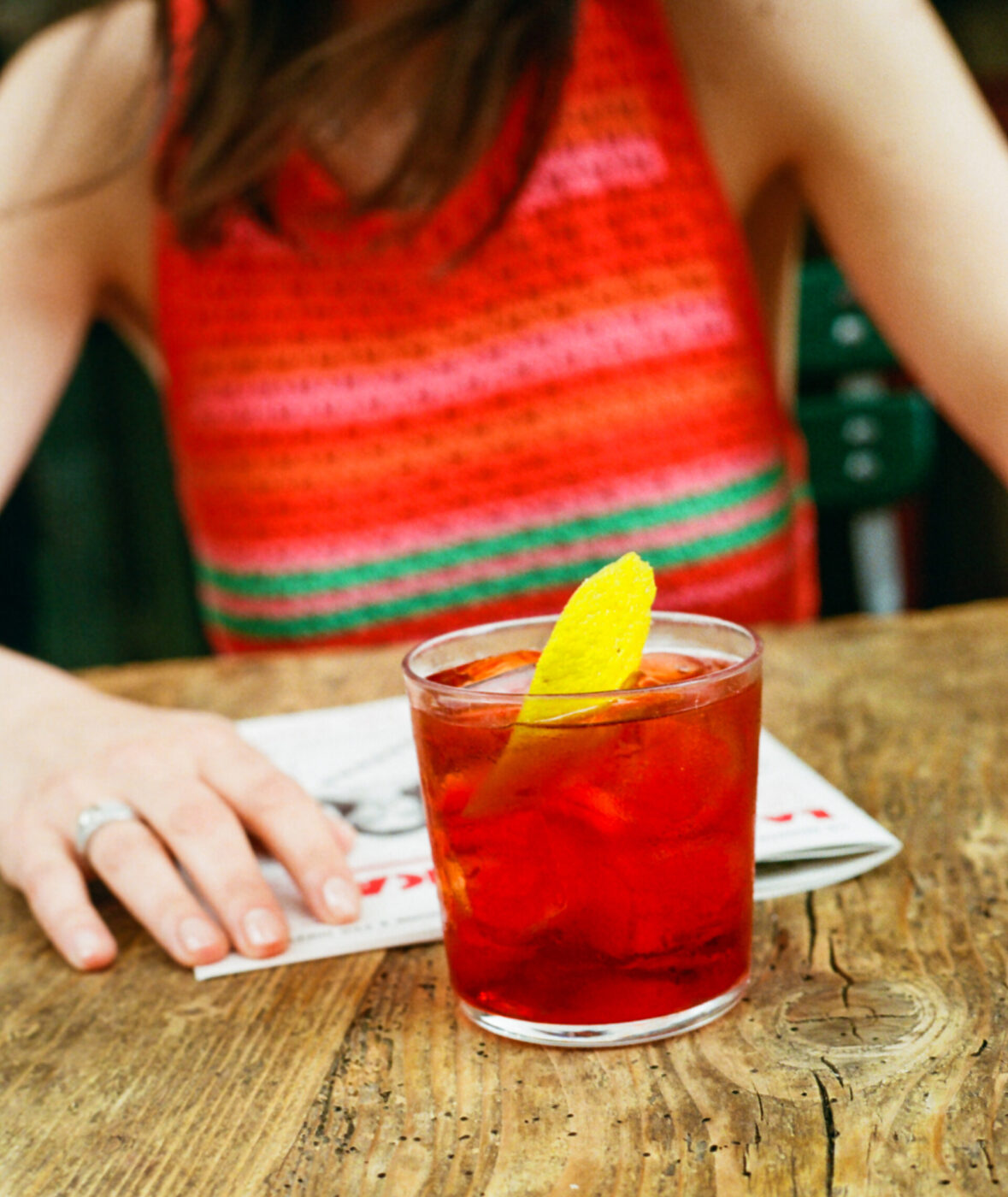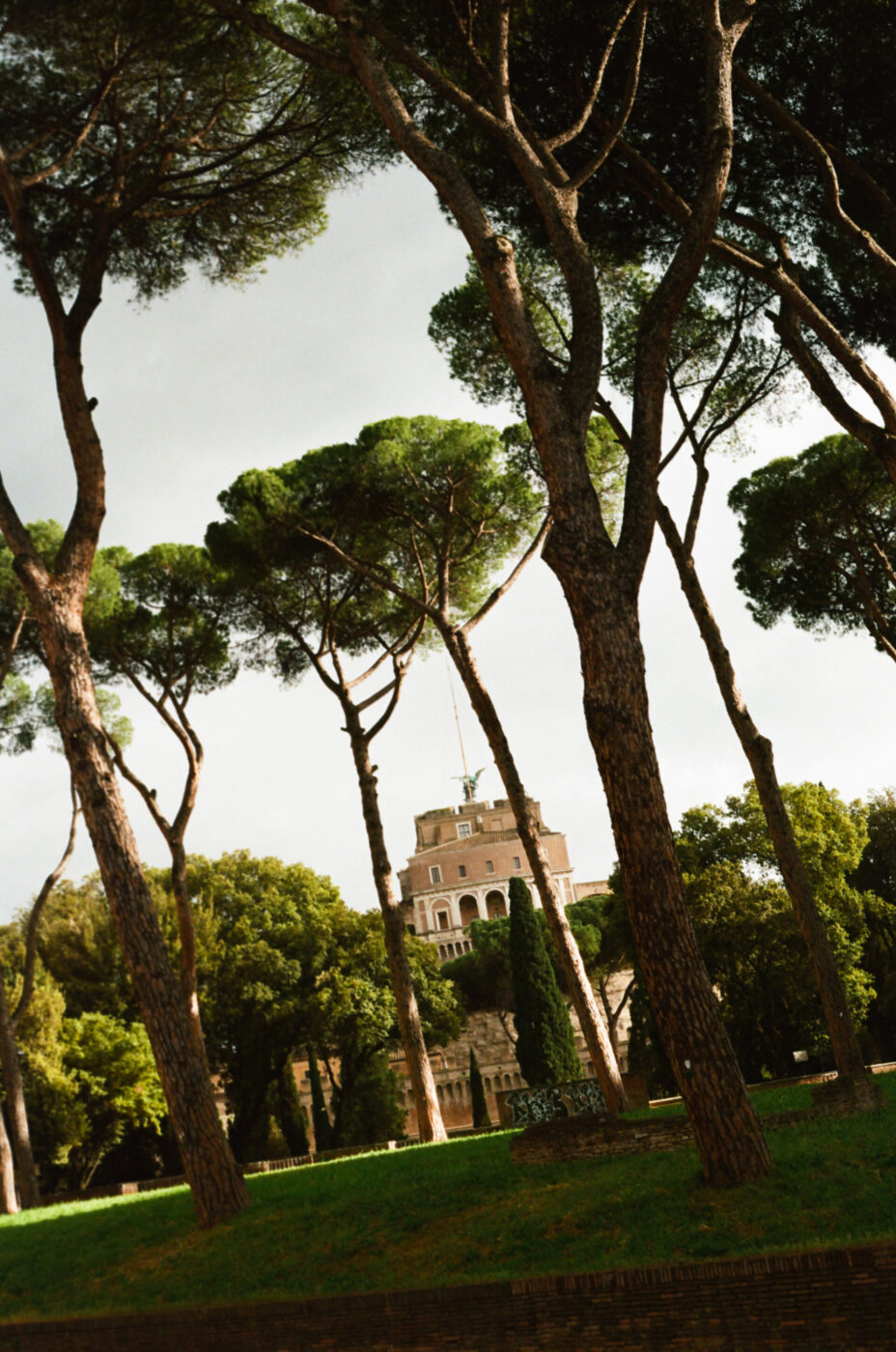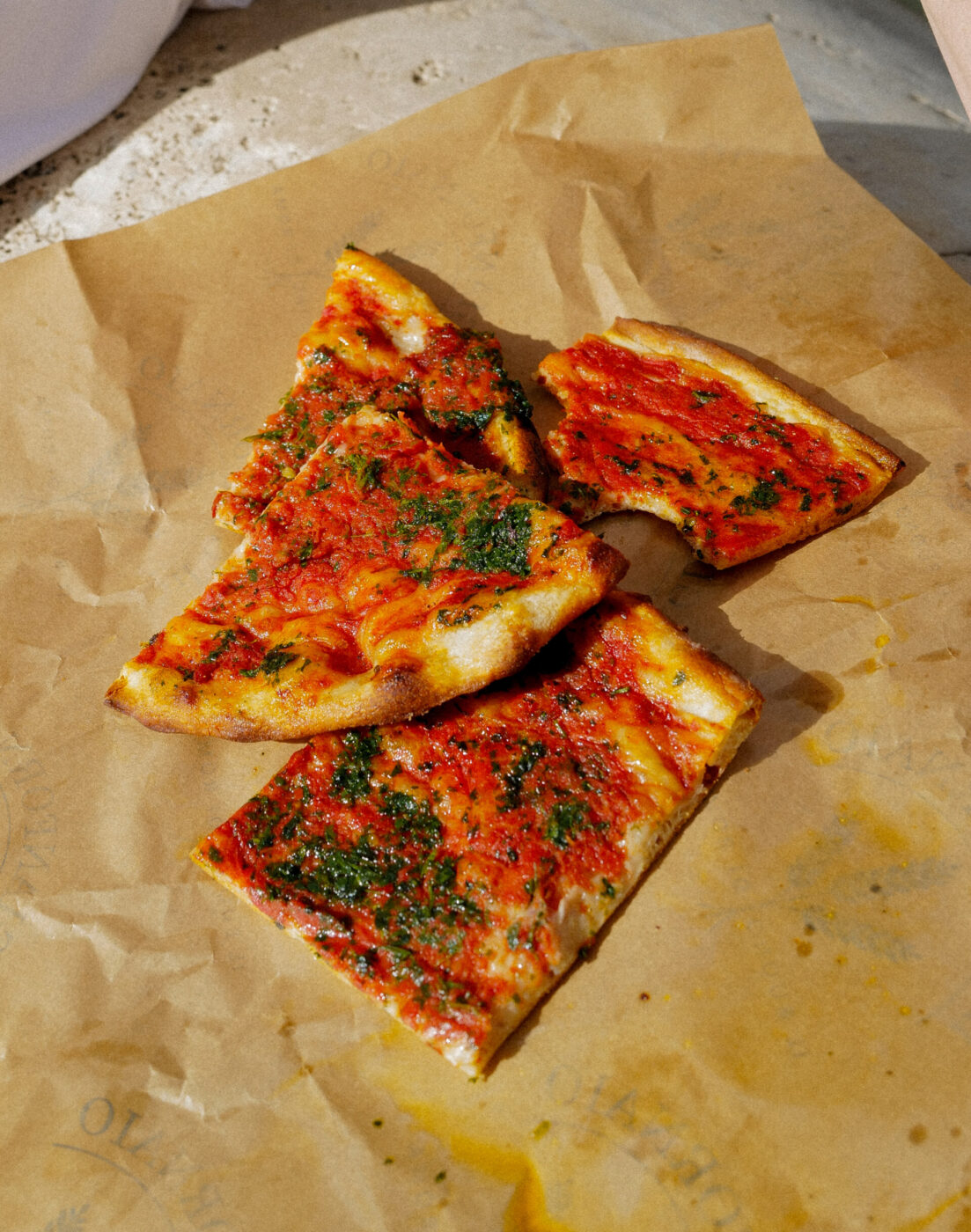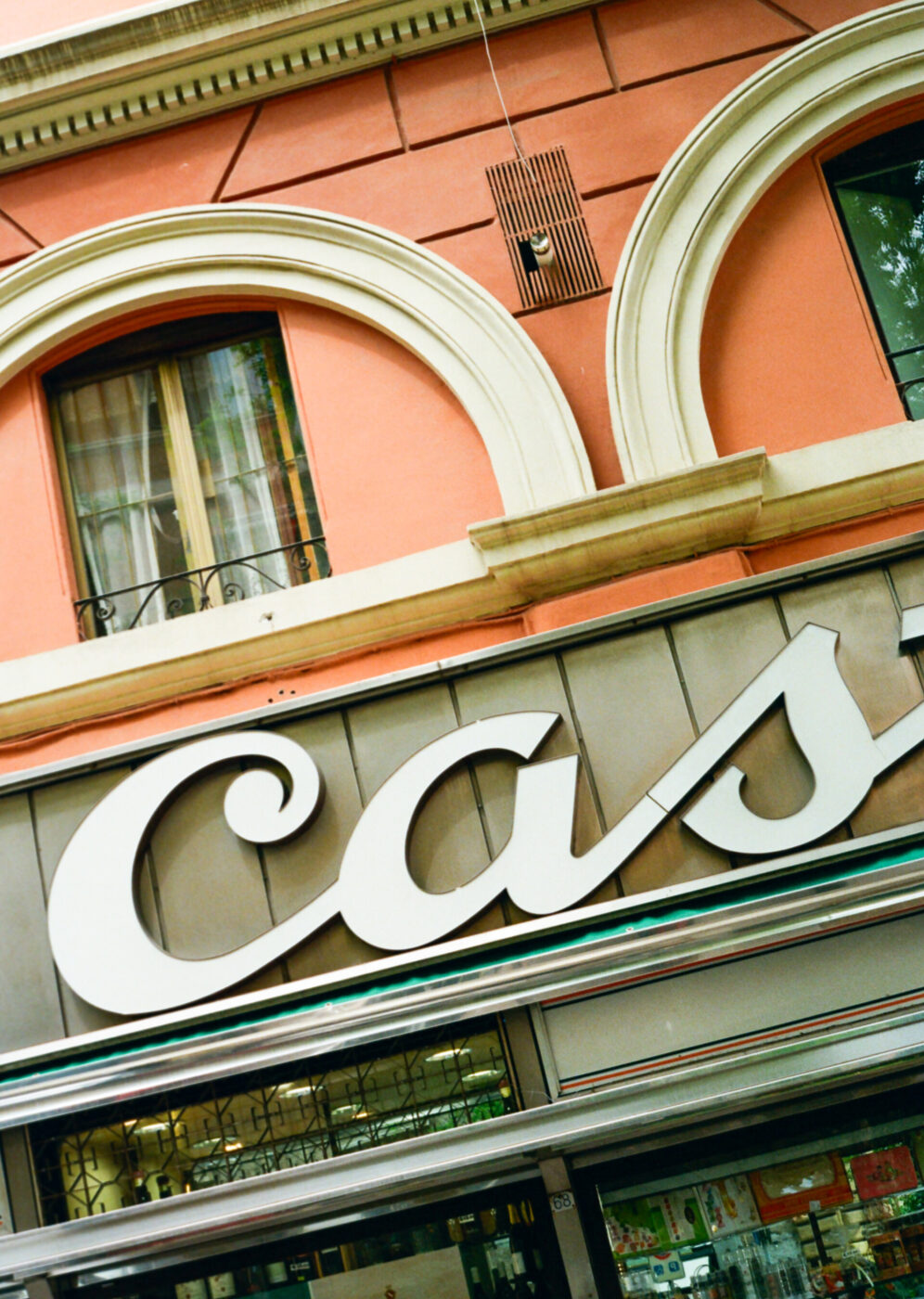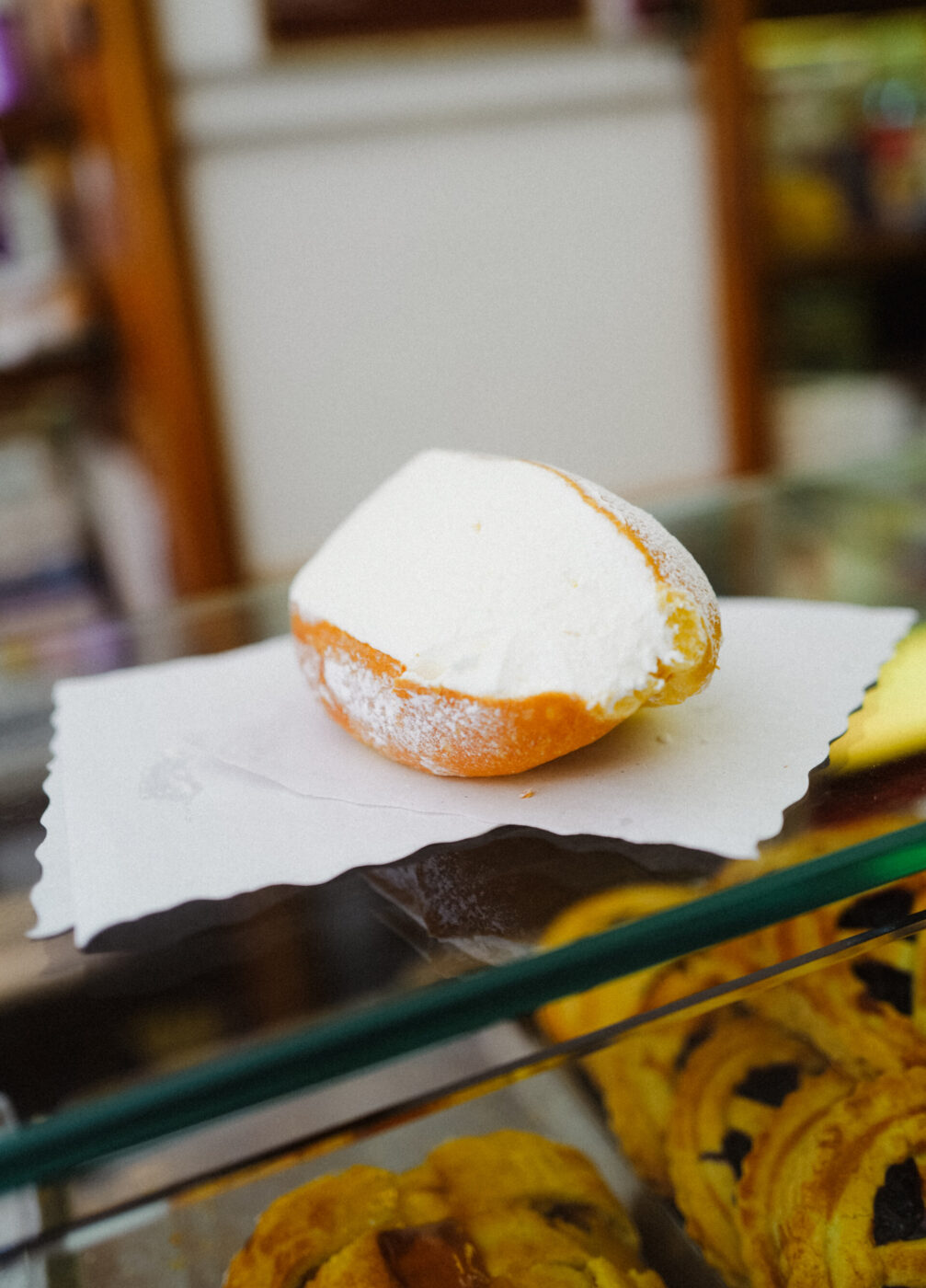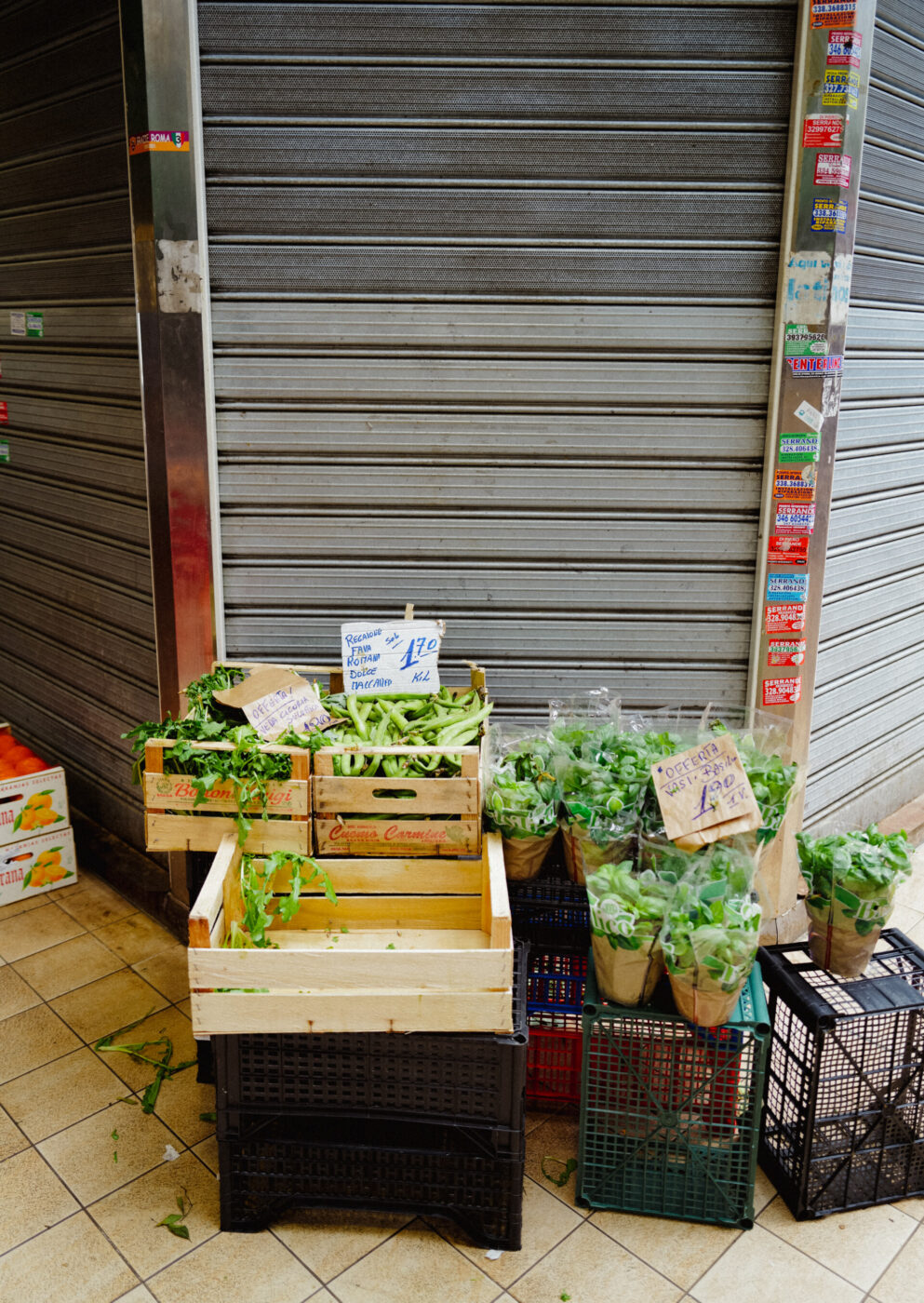The Vatican is certainly getting lots of attention this year, but those flocking to the Sistine Chapel and St. Peter’s Basilica are missing out on one of Rome’s best-kept secrets: the neighborhood of Prati, located a little northeast of the papal-ruled country and bordering the west bank of the Tiber. It’s immediately recognizable by the Castel Sant’Angelo, but few venture past that circular marvel to the wide boulevards and manicured green spaces beyond. Filled with palazzi umbertini (buildings constructed during the reign of King Umberto I), and Liberty-style villas, this is widely considered to be Rome’s chicest neighborhood.
Stop for an espresso near Piazza Cavour and you’ll be standing aside crisp-suited lawyers speaking more legalese than Romanesco—this is Rome’s legal district, its border delineating not just neighborhoods, but church and state. Prati is home to the imposing “Palazzaccio” (nicknamed not-so-lovingly by locals), the current headquarters of RAI, and three of the city’s best shopping streets, alongside a smattering of great restaurants and bars. The 22nd and final rione of Rome’s historic neighborhoods, Prati was also the stomping grounds of a young Nanni Moretti, who filmed his first cult classics here before decamping to Monteverde; take a walk around and you’ll see that it still feels like the kind of place a director would choose.
Here, our guide on where to eat and drink, and what to do, in this elegant neighborhood, according to the locals.
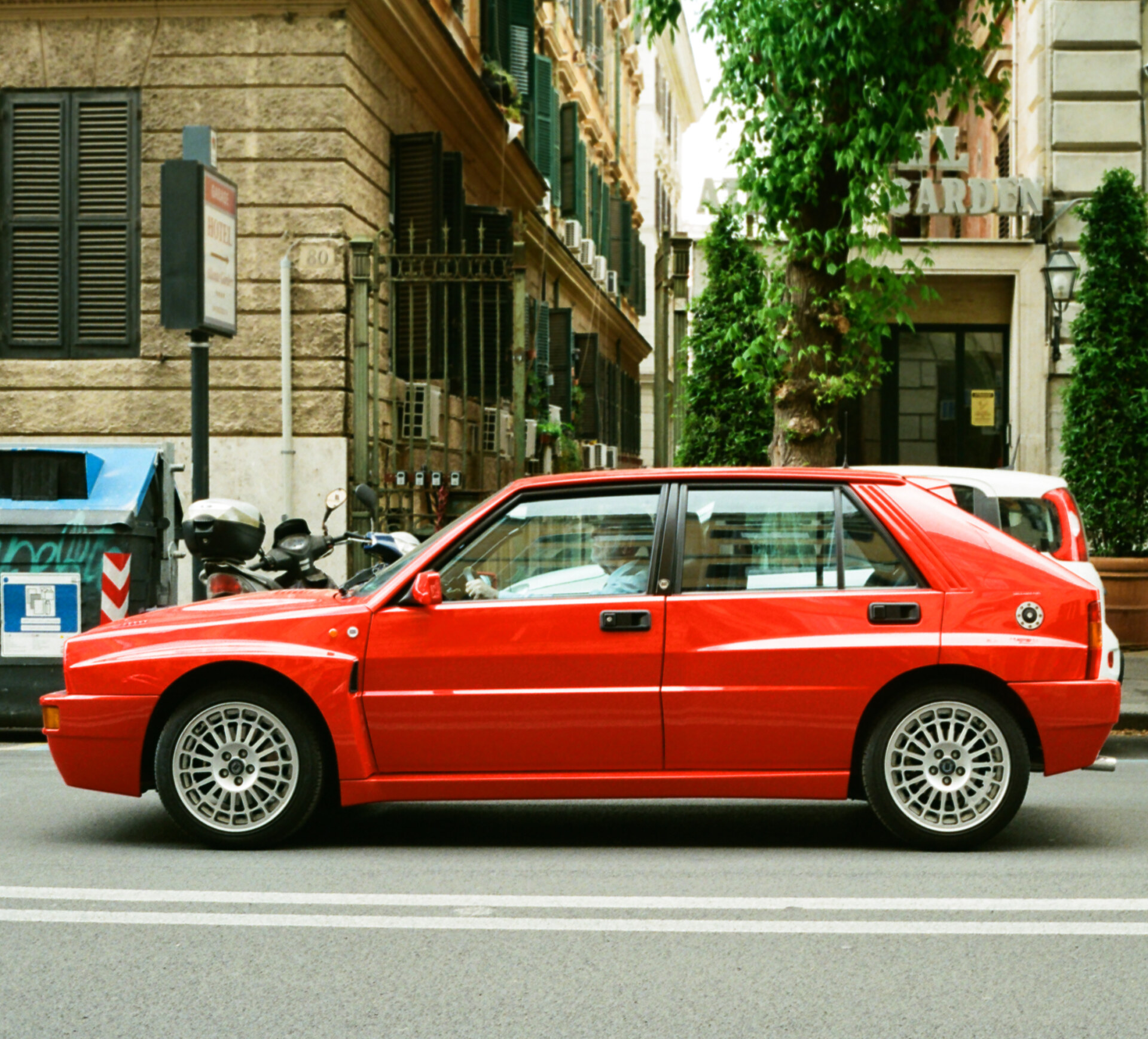
WHERE TO EAT IN PRATI
Da Benito e Gilberto – Just steps from the Vatican, this restaurant was established in 1976 by father-and-son duo Benito and Gilberto. Today, it’s run by Gilberto and his wife Angela along with their daughters Valentina, Federica, and Nicole, who serve some of the city’s best seafood atop blue-and-white striped tablecloths. Everything is delicious, but most come here for the selection of French and Irish oysters—perfect when paired with a chilled glass of something white.
Casadora – This hip pastificio could hold its own in New York City or Copenhagen, with design choices that include clean white shelves, turquoise tile, wood accents, and spherical lights. Founded by a group of friends and led by chef Giulia Ghisellini, it blends traditional pasta-making with fine-dining flair. Many locals pop in to pick up some fresh pasta, natural wines, and artisanal sauces, though you can also enjoy a short, seasonal lunch menu with their pastas—think shrimp and lime ravioli or venison ragù tagliatelle.
Pasticceria Parenti – Run by the Parenti family since its opening in 1960, this no-frills pasticceria is the neighborhood spot for pasticcini: all sorts of bite-sized traditional sweets, from maritozzi to cornetti to zeppole. There’s no tables, so enjoy your espresso (or top-notch cappuccino) and treat al bancone for a quick pick-me-up any time of the day.
Panificio Marè Prati – You come here for street food alla Romana. The small family-run bakery, established in 1987 by Fabio Marè and now helmed by his son Daniele, is renowned for its commitment to natural leavening and high-quality ingredients. Come for the crunchy supplì and pizza alla pala, made with a 24-hour fermented dough. Don’t miss taking a peek at their rotating offerings of pastries and other ready-prepped dishes.
Panificio Bonci – This cult-favorite bakery from Chef’s Table star Gabriele Bonci is a mecca for naturally leavened breads, pastries, and pizza al taglio made with heritage grains and inventive toppings. From fig-studded loaves to buttery brioche, everything reflects Bonci’s obsessive commitment to quality, seasonality, and flavor. Snag a slice of the marinara alla pala and one or two supplì for the perfect lunch. There might be a bit of a line, but it’s worth the wait.
Il Gianfornaio – A Prati landmark since 1983, Il Gianfornaio churns out signature loaves—tangy Pane di Matera and olive‑studded schiacciata—from their wood-fired oven alongside maritozzi piped with fresh cream. The in‑house coffee bar pulls single‑origin espresso, while the pizza al taglio counter offers ever‑changing toppings; our favorite is the rossa piccante con prezzemolo. With sleek interiors, a friendly counter crew, and a handful of outdoor tables, this place shines from breakfast through aperitivo.
Gastronomia Gabrini – Blending tradition with contemporary flair, this gastronomia is like a neighborhood lunchroom, where patrons grab a tray and sit for a quick lunch between meetings or appointments. It’s great for grabbing some prepped foods to go as well. As evening falls, more tables emerge, transforming the space into a modern osteria where chef Marco Moroni whips up Roman dishes alongside some new ones—think tagliolini with butter, leeks, and parmesan or octopus tripe cacciatori style. They also offer a great selection of natural wines and artisanal beers to buy and/or sip there.
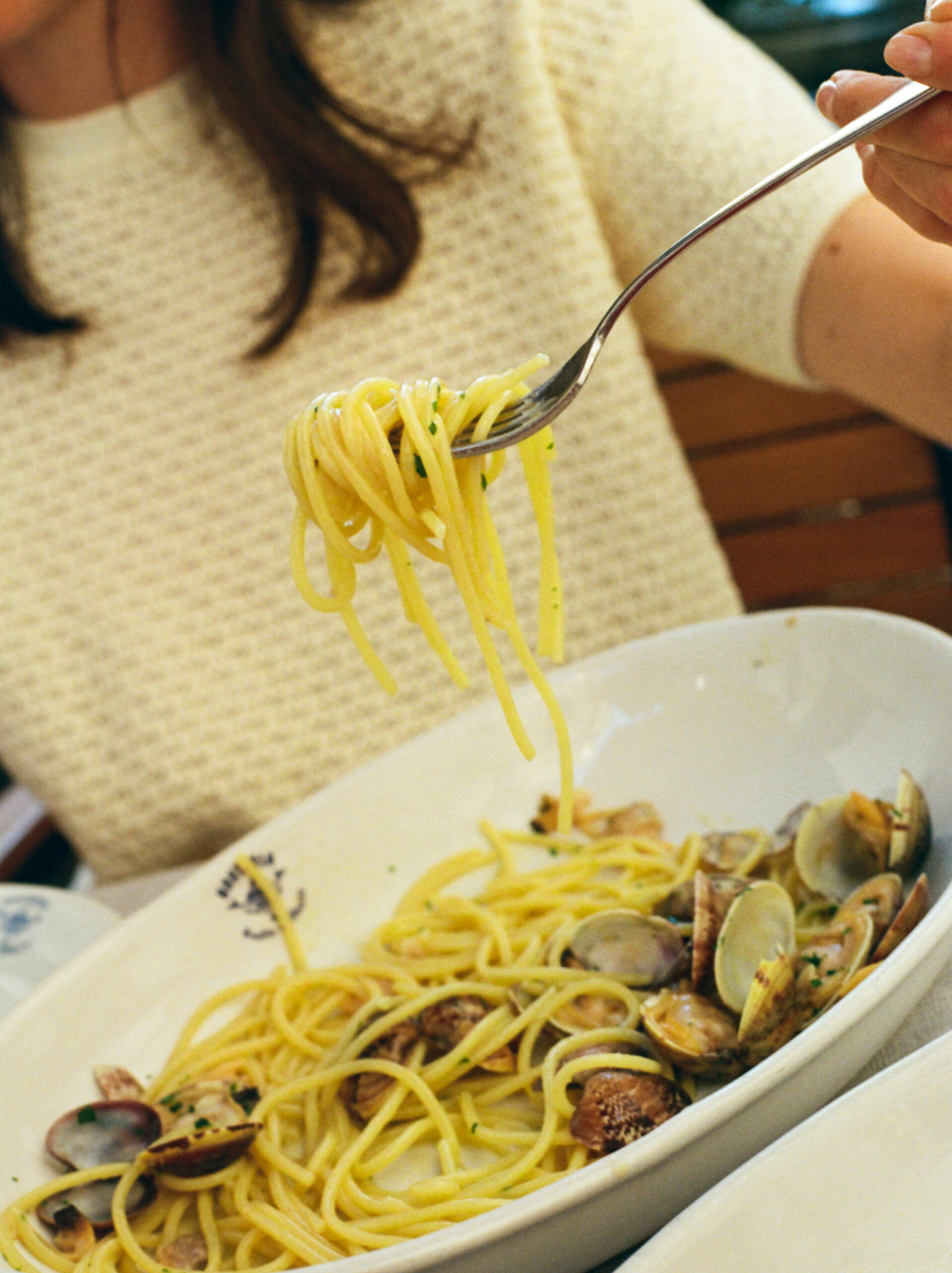
Da Benito e Gilberto
WHERE TO SHOP FOR FOOD IN PRATI
Castroni – Our favorite of the store’s many locations, this café and bottega, open since 1932, is a treasure trove of just about everything—coffees and teas, spices and oils, wines, sweets, and hard-to-find international ingredients. Come for provisions or a last-minute gift; stay for a caffè con panna at the counter.
Mercato Trionfale – Considered to be the first Roman market, this mercato has 273 stalls, which makes it one of the largest in Europe. Tucked just behind the Vatican walls, it’s a little chaotic, but it’s where locals come for crates of seasonal produce, fresh eggs, porchetta, fish still packed in ice, and maybe a quick espresso between errands. For any culinary item you could want, you’ll find it here.
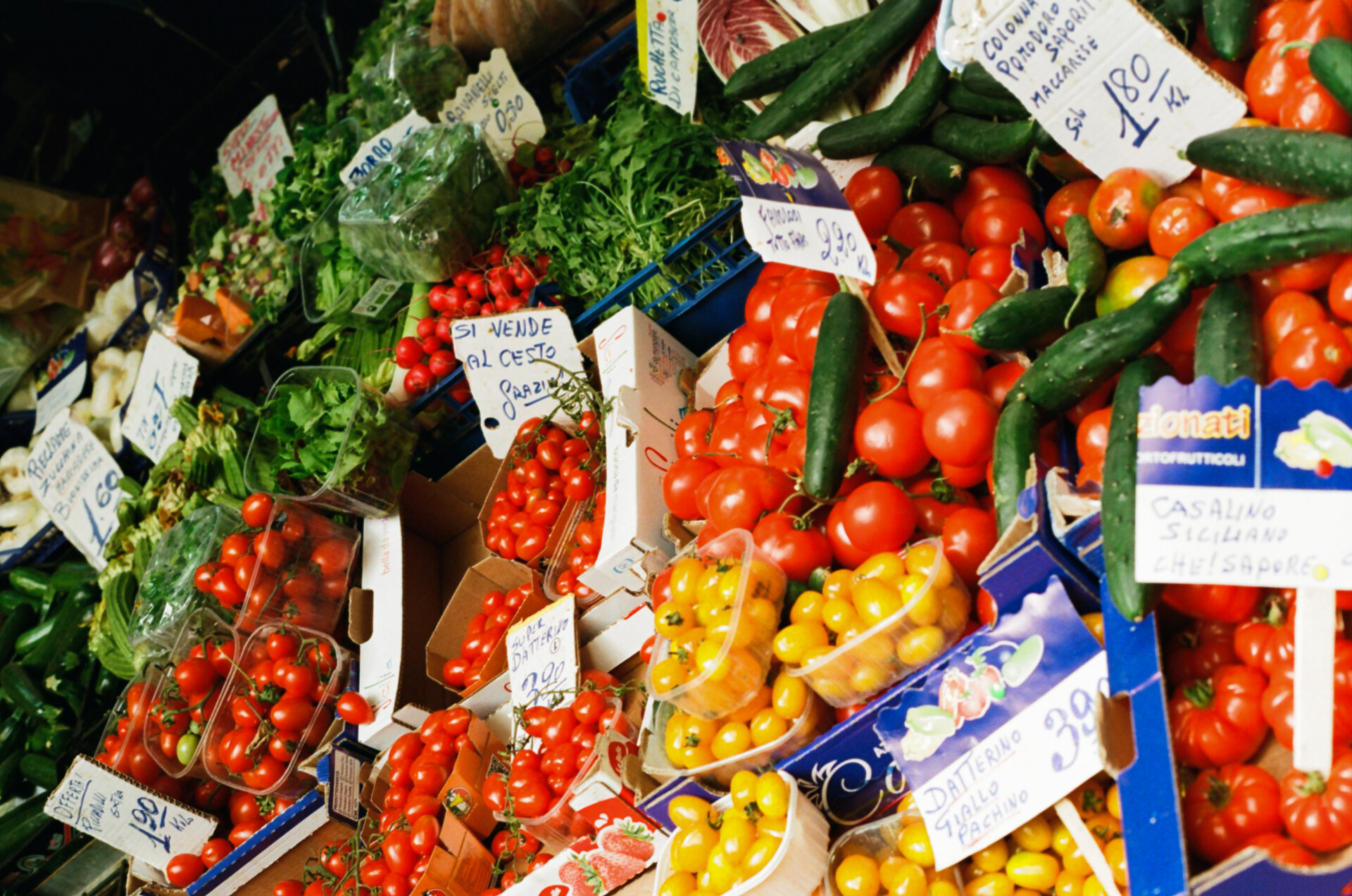
Mercato Trionfale
WHERE TO DRINK IN PRATI
Il Sorpasso – This Prati staple is an all-day affair: locals stop in for espresso and pastries at the front bar in the morning, and at night, the back room fills with the hum of conversation over small plates and natural wines. The rustic decor and welcoming vibe make it a favorite for aperitivo, and it’s particularly nice if you manage to snag a spot outside.
Il Baretto di 40 – You’ll notice this “tiny bar” first from the bright yellow building it’s tucked into, second by the crowd of locals sprawling outside, and third by the tiny red ape that’s always parked out front. You come here for simple cocktails and natural wines that showcase small Italian producers, plus to eavesdrop on the gossip of the week. On some nights, you’ll find a DJ spinning tunes.
Piccolo Bar at Villa Laetitia – This boutique hotel, designed by Anna Fendi Venturini, is located within a historic Art Nouveau villa along the Tiber River. Their Piccolo Bar is an intimate, artful lounge that feels more like the drawing room of a worldly Roman aristocrat. Come here to unwind with a glass of natural wine or one of their signature cocktails—said to be inspired by the Fendi family’s favorites. It’s quite the refined setting, but still relaxed, and a great escape from the crowds.
Enofficina – Come to this lovely, casual wine bar for a glass of something Italian paired with one of their tagliere platters. They also have craft beers and artisanal spirits on offer, complemented by a menu of seasonal small plates and a daily-changing dinner menu that can easily turn aperitivo into a full-evening affair. Regular events, including live music and themed nights, add to the charm.

Il Sorpasso
WHAT TO DO IN PRATI
Giardini di Piazza Mazzini – Laid out between 1927 and 1930 by landscape architect Raffaele De Vico, these gardens are at the heart of the Vittoria district—once a military training ground and later a showpiece for the 1911 International Exhibition celebrating Italian unification. At the center is De Vico’s “garden-fountain”: an octagonal basin framed by box hedges and cypresses, designed with sculptor Ermenegildo Luppi and inspired by ancient nymphaea. The outside still bears problematic Fascist insignia and eagles atop the columns at each corner—reminders of the garden’s bygone era. Grab a book and spend a few hours under the shade of the holm oaks.
Casa Balla – Hidden on the fourth floor of a Prati apartment block, Casa Balla is a riot of Futurist imagination. From 1929 to 1958, Giacomo Balla—along with his wife and daughters—turned their home into a living manifesto: painted walls, handmade furniture, clothes stitched from scraps. Every inch pulses with color, motion, and theory, inspired by the 1915 “Futurist Reconstruction of the Universe”. Closed for decades after the family’s death, it reopened in 2021 via MAXXI and was recently acquired by the Italian State. Tours are guided and capped at 12—book ahead.
Belvedere dello Zodiaco – Perched atop Monte Mario at 139 meters—the highest natural point in Rome—the Belvedere dello Zodiaco offers a sweeping panorama of the Eternal City: you can see the Vatican, Flaminio, the Foro Italico sports complex, and, on clear days, even the distant Colli Albani and Apennine peaks. Known locally as the “Vialetto degli Innamorati” (“Lovers’ Lane”), this romantic spot is adjacent to the historic Villa Mellini, home to the Astronomical and Meteorological Observatory since 1935. Come at dusk for some great stargazing.
Castel Sant’Angelo – Built in the 2nd century AD as Emperor Hadrian’s mausoleum, Castel Sant’Angelo has lived many lives—imperial tomb, fortress, papal residence, prison, military barracks. Its name comes from the Archangel Michael, said to have appeared atop the tower in 590 AD to end a plague. Linked to the Vatican by the secret 800-meter-long Passetto di Borgo, it became a papal escape route in times of siege. Inside, winding ramps—so horses could enter—lead past ancient sarcophagi, Renaissance papal apartments, frescoed halls, and military artifacts. Outside, the rooftop terrace offers one of Rome’s most cinematic views: St. Peter’s, the Tiber, and the curve of Ponte Sant’Angelo below, lined with Bernini’s angels (which are worth a closer look once you leave the castle).
Chiesa del Sacro Cuore del Suffragio – If you stumble upon this church, you might think you’ve been transported to Milan. Nicknamed the “Piccolo Duomo di Milano” for its spiky Neo-Gothic façade, the “Church of the Sacred Heart” was built as a house of worship for the Sacred Heart and the Virgin Mary. Built between 1894 and 1917, it was designed by Giuseppe Gualandi and is, rather uniquely, dedicated to souls in purgatory. Fittingly, it houses the Museo delle Anime del Purgatorio—a tiny, eerie museum of scorched prayer books and handprints said to be left by spirits asking for Masses in their name.
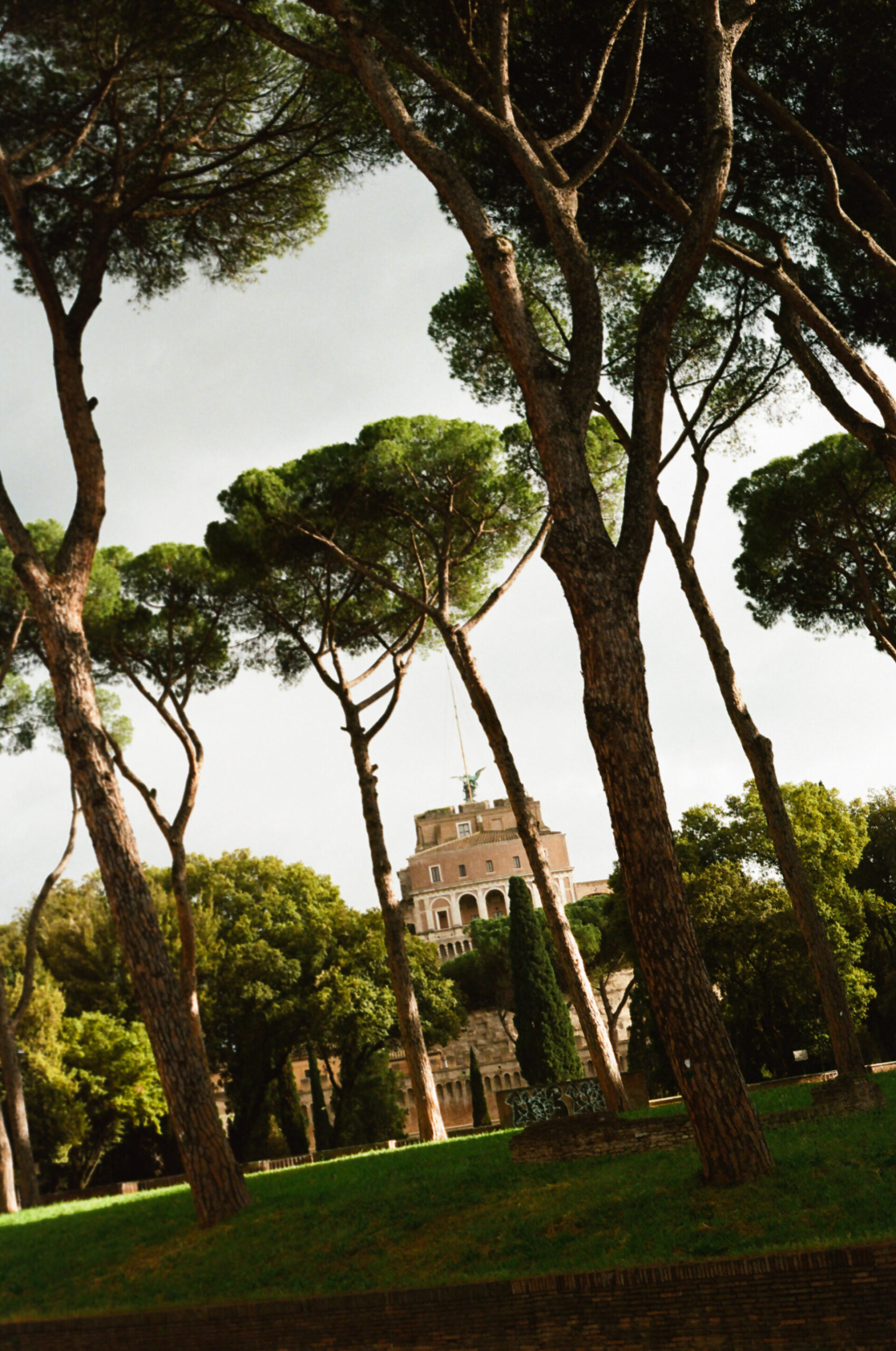
Castel Sant'Angelo
Il Palazzo di Giustizia – This monumental Neo-Renaissance building stretches over 300 meters along the Tiber River. It was designed by Guglielmo Calderini to be a grand “temple of justice,” although the jury’s still out on the ornate, heavily decorated travertine facade. It’s known to the Romans as Il Palazzaccio (“bad palace”) because of its giant, grotesque exterior—a nickname that became quite fitting during its 20-year stint as headquarters of the Fascist Special Tribunal (and then a Nazi shooting site). Not even the physical ground it rests upon seems pleased by the massive sculptures, Corinthian columns, and imposing central pediment—the alluvial soil has caused major structural troubles since the building’s completion in 1910. Today, it houses Italy’s Supreme Court of Cassation, the Judicial Public Library, and other judicial bodies, so access is limited. But it’s really the “awful” outside that’s worth viewing, best from nearby Ponte Umberto I.
Passeggiata del Gelsomino – This elevated linear walkway recalls New York City’s High Line and follows the route of a former Vatican railway line, originally built in the 1930s to connect Vatican City with the Italian rail network. Today, the path is just under a kilometer long and stretches from Via delle Fornaci toward the Vatican walls, offering sweeping views over Rome’s rooftops, St. Peter’s Basilica, and the greenery of nearby gardens. Don’t miss a visit in spring, when the jasmine for which it’s named is blooming.
Tempio Valdese di Piazza Cavour – Completed in 1913, this Art Nouveau church designed by architect Manfredo Manfredi is a rare break from Rome’s Baroque skyline: the outside features a pale stone facade, twin bell towers, and a massive rose window. The inside was decorated by Paolo Paschetto, who painted stars on the ceiling, created a mosaic on the dome, and designed the polychrome glass windows. Built for Rome’s Waldensian community, it reflects both religious tolerance and the diverse cultural layers of modern Rome.
Chiesa di San Gioacchino in Prati – Built between 1891 and 1898, this church is a striking example of late-19th century ecclesiastical architecture with a red brick facade framed by white travertine. Inside, find golden mosaics and an aluminum dome perforated with crystal stars. Dedicated to Saint Joachim, the church was a gift from French Catholics to Pope Leo XIII for his jubilee and reflects a blend of neo-Gothic and eclectic styles.
Piazza dei Quiriti – Right nearby the church of San Gioacchino, this piazza was built in the early 20th century, during Rome’s rapid expansion, and named for the Quirites, an ancient term for Roman citizens. Surrounding the fountain are curved apartment buildings, and at its center stands the Fontana del Carciofo (Artichoke Fountain), designed by Attilio Selva in 1928, a whimsical modern addition to the area’s orderly symmetry.
